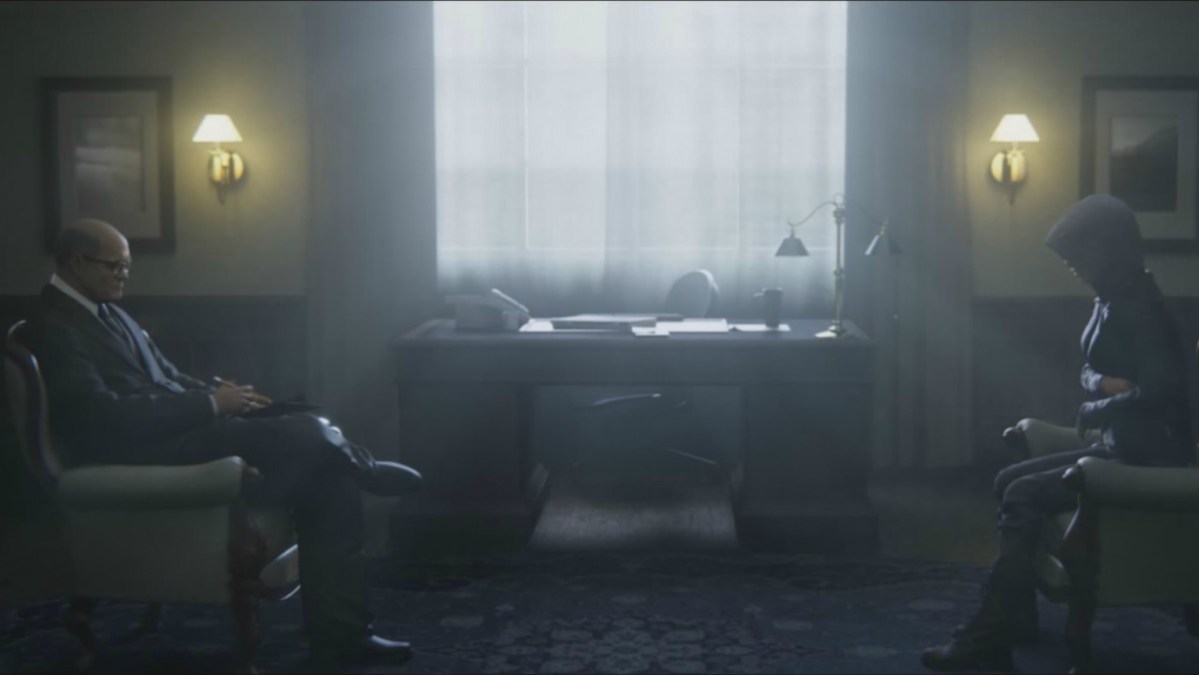Short answer: because it’s a video game
Pretty boy Steven Hansen enjoyed our Xbox One Game of the Year Rise of the Tomb Raider, saying that it was “perfunctory Hollywood boilerplate, down to the set up for the sequel, but competently done.” I agree with just about everything in that review, but now that some time has passed since the game’s release, let’s do a deeper dive into the plot’s various shortcomings.
Steven mentioned that the story was “pretty one-dimensional (even with everything wrapped up in explanatory audio logs),” but if some of those logs were given more of a spotlight, Rise would have been give some much-needed substance. From a gameplay and cutscene perspective, both games are nearly identical. Once I had wiped off all of the sugar from my teeth, I couldn’t shake the feeling that I had waited two years to bite into the exact same cupcake.
Lara arrives to place, Lara is un-armed, Lara makes bow, Lara meets place’s inhabitants, Lara finds that every surface is covered in rope, Lara uses her survival instincts cheater button too many damn times, Lara encounters the supernatural, Lara looks within, finds strength, kills thing.
Spoilers follow from here on out.
Remember when Rise of the Tomb Raider was announced at the Xbox’s E3 press conference? If not, here it is:
Lara is at a therapy session, and a psychologist is telling her that despite the trauma she faced, she needs to reintegrate into society, maybe “take up some hobbies”. She impatiently taps her foot, clad in a hood, eyes downcast, obviously beyond uncomfortable. Her hands are wounded, a fact that she’s trying to keep a secret from the psychologist. This all adds up to a surprisingly human look at what someone would face after the (admittedly ridiculous) harrowing events of the first game. That images of her continuing to delve into dangerous situations are woven throughout the trailer add an uncomfortable, yet empowering edge.
Most games shy away from dealing with trauma, yet from the outset Rise of the Tomb Raider looked like it might have something to say about the subject. Some viewers interpreted the teaser as showing Lara as damaged, but as someone who regularly goest to a therapist, I saw it as a strength. However, this scene is nowhere to be found in the finished product. These therapy sessions are relegated to simple audio logs, and even worse than that, they aren’t ones that you find lying around on the floor. At some point after Ana, Lara’s father’s lover (and member of Trinity, the capital E evil ancient order that’s searching for immortality) betrays Lara, a pop-up tells you that you’ve unlocked some audio logs. It’s easy to miss.

If you give these a listen, you’ll find an extra layer of fucked-up. These therapy sessions were actually orchestrated by Trinity, and they’re pushing Lara to go in the direction that they want. One recording shows that they’re trying to separate Lara from Jonah, her friend and fellow survivor. Each tape ends with Ana scheming about how best to further manipulate Lara. This is good stuff, and is so much more interesting than the rote plot that ended up in Rise. Therapy in general seems to be a big no-no in game stories, but this could have been handled in a way that gave depth to Lara’s character, giving her more of a reason to detest Trinity. It also makes them seem like a more dangerous enemy, secretly pulling global strings instead of just giving an army of idiots guns so that they can all be massacred by a young woman who built a bow out of sticks.
Ana’s brother, Konstantin, is a leader of one of Trinity’s battalions, and is memorable for three things: a gravelly voice, an under-cooked boss battle, and stigmata on his hands that bleed when his prayers are answered. Sure, I can believe in a holy figure that responds to prayers in a game that has immortal soldiers that explode into blue flames when you blast them with a shotgun. But another audio log from Ana’s perspective reveals that Konstantin was directionless, lacking faith. One night, she decided to stab both of his hands so that he would believe he was chosen by God. This gave him the necessary push to keep him searching for the secret to immortality so that he could save Ana from a terminal illness.
Why was this not touched upon in-game? Ana abusing her brother’s buried zealotry for her personal gain, and him re-opening his wounds because he so desperately wants to believe in a higher power is a huge bit of character development that goes a long way in making these people at least somewhat believable in Tomb Raider‘s cartoonish world. I’m all for adding a human element into this series instead of making Lara an indestructible globe-hopping terminator (even though that’s…still what they’re doing), but someone is clearly stifling the writers’ potential here. I’m curious how much of what Rhianna Pratchett is writing is getting thrown out in favor of “more explosions, less exposition.”

Again, I found plenty to enjoy in Rise of the Tomb Raider for the most part, and I’ll play a sequel. Hopefully there’ll the more thoughtful ideas will be allowed to float to the surface. And seriously, why isn’t Lara using two pistols yet, especially since she used them for the final encounter in the first game (in a QTE, but I digress)? I promise you, it’s not any less believable than her killing a billion guys.
One last thing. Are we taking bets on whether or not Sofia was supposed to be another player character in a scrapped co-op mode? She has braids, a bow, and all but disappears in the last quarter of the game. I have a feeling there was a more volatile development cycle here than we know.





Published: Dec 29, 2015 04:00 pm